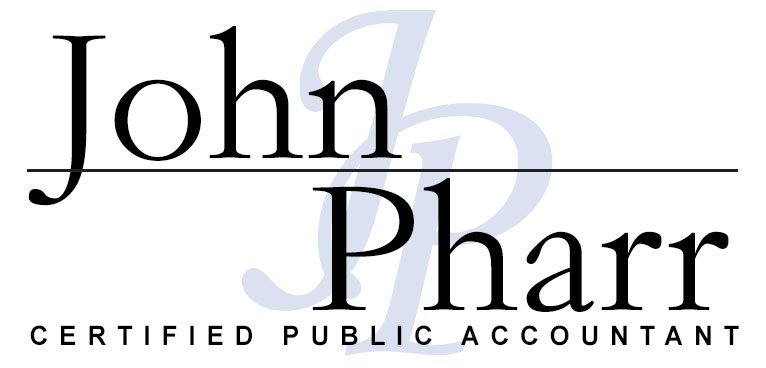Cutting Your Tax Bill: 8 Effective Ways To Save
When addressing the task of filing federal income taxes, an important approach involves thorough review and strategic planning.
Your financial advisor is equipped to assist you in identifying opportunities for tax savings throughout the year. Collaborating with a tax professional will aim to optimize your taxes and prevent yuo from overpaying.
Consider the following eight potential strategies for reducing your tax burden in consultation with your financial advisor, who can provide personalized guidance tailored to your financial circumstances.
1. Strategic Tax Planning Throughout the Year
Implementing a proactive approach to tax planning entails continuous assessment to gauge your potential tax bracket and devise strategies aimed at minimizing your taxable income.
- Beginning of the year: Initiating tax planning early in the year provides ample time to strategize and implement measures that can yield significant benefits during tax filing. By adopting this proactive stance, you afford yourself the flexibility to explore various tax-saving avenues.
- End of the year: As the year draws to a close, revisiting your tax strategies becomes imperative. This review allows you to seize any remaining opportunities to mitigate your tax liability. For instance, maximizing contributions to your pre-tax assets, such as a 401(k), towards year-end can effectively reduce your taxable income.
2. Investing in Retirement Accounts
Contributing to retirement accounts serves as a dual-purpose financial strategy, benefiting both your long-term financial security and your immediate tax obligations. Understanding the tax implications associated with different retirement accounts can help you maximize your tax savings. Here’s how contributions to various retirement accounts can potentially reduce your tax burden:
- Traditional 401(k): By contributing to a traditional 401(k), your contributions are deducted from your paycheck before taxes are applied. As a result, your taxable income is reduced, which can lead to lower federal taxes for the tax year. This strategy is particularly advantageous if your income places you across multiple tax brackets.
- Traditional IRA: Contributions to a traditional IRA may be tax deductible, depending on your income level and whether you have access to a retirement plan through your employer. This deduction can effectively lower your taxable income, resulting in potential tax savings.
- Roth IRA: Contributions to a Roth IRA are made with after-tax dollars, meaning they do not lower your immediate tax bill. However, the benefit lies in tax-free distributions during retirement, provided certain conditions are met. While contributions to a Roth IRA do not offer immediate tax savings, they can provide tax-free income in retirement, offering a valuable long-term tax advantage.
3. Grow Your HSA Fund
Consider maximizing your contributions to your Health Savings Account (HSA) if you are enrolled in a high-deductible health plan (HDHP). HSAs offer a unique set of tax advantages that can significantly benefit your financial health.
Contributions to an HSA are made with pre-tax dollars, effectively lowering your taxable income for the current tax year. Additionally, funds within the HSA can grow tax-deferred, allowing for potential investment growth over time without immediate tax implications.
One of the most compelling features of an HSA is its triple-tax benefit. Withdrawals from the account are tax-free if used for qualified medical expenses, making HSAs the only accounts with this beneficial tax treatment. By taking advantage of these benefits, you can effectively manage healthcare costs while simultaneously saving for the future.
4. Explore QCDs After 70.5 Years
For individuals aged 70.5 years or older seeking to support charitable causes, a Qualified Charitable Distribution (QCD) presents a tax-efficient option. By directing funds of up to $100,000 directly from an Individual Retirement Account (IRA) to a qualified charity, you can mitigate the impact on your Adjusted Gross Income (AGI), both currently and in the future.
A QCD offers several advantages whether you opt for the standard deduction or itemize deductions. Notably, it enables you to fulfill your Required Minimum Distribution (RMD) obligation, if applicable, while simultaneously contributing to charitable endeavors. This strategy effectively allows you to support causes you care about while optimizing your tax situation.
5. Maximize Deductions When Itemizing
A tax deduction serves as a valuable tool for reducing your taxable income, potentially leading to lower tax liability. When determining whether to opt for the standard deduction or itemized deductions, it’s essential to evaluate your individual circumstances carefully. If you intend to itemize deductions instead of taking the standard deduction, early planning can help maximize the tax benefits.
Exploring deductions exclusively available to itemizers can significantly enhance your tax-saving potential. Here are some key itemized deductions worth considering:
- Qualified Charitable Contributions: Donations made to eligible charitable organizations may be deducted from your taxable income, providing a tax benefit for your philanthropic contributions.
- Unreimbursed Medical and Dental Expenses: Medical and dental expenses that exceed 7.5% of your adjusted gross income (AGI) can be deducted. This deduction can help alleviate the financial burden of significant healthcare costs.
- Mortgage Interest Deduction: Interest paid on mortgage loans secured by your primary or secondary residence may be deductible, offering potential tax savings for homeowners.
By strategically leveraging these itemized deductions, you can optimize your tax situation and potentially reduce your overall tax bill.
6. Utilize Tax Credit Opportunities
A tax credit is a valuable tool that directly lowers your tax liability by the full amount of the credit. To capitalize on available credits and avoid overlooking any newly introduced by the government, it’s essential to conduct an annual review of potential credits applicable to your situation.
One notable credit introduced under the Inflation Reduction Act offers incentives to taxpayers who invest in specific areas. For instance, individuals purchasing qualified electric vehicles or making eligible energy improvements to their residences may qualify for tax credits. Keeping abreast of such opportunities ensures you maximize potential savings and take full advantage of available government incentives.
7. Consider Tax-loss Harvesting
Investment losses can present a tax-saving opportunity through a technique known as tax-loss harvesting. This strategy entails strategically selling investments at a loss to offset capital gains taxes incurred from other profitable investments, thus potentially reducing your overall tax liability. In essence, tax-loss harvesting leverages the tax code to mitigate the impact of investment losses.
While tax-loss harvesting offers potential tax benefits, its implementation can be intricate. Therefore, it is advisable to seek personalized guidance from your financial advisor to ensure proper execution and alignment with your financial objectives.
8. Analyze Opportunities To Harvest Capital Gains
Capitalizing on capital gains for tax advantages represents the converse strategy to tax-loss harvesting, and the current economic landscape presents an opportune time to consider its implementation, given the temporary reduction in tax brackets.
The Tax Cuts and Jobs Act of 2017 ushered in a temporary decrease in income taxes and brackets until the conclusion of 2025. In the absence of legislation extending these rates, strategic planning can leverage this window of opportunity to sell assets with accrued gains. If executed adeptly, this approach enables you to potentially incur taxes on the gains at more favorable tax rates.
While such transactions may elevate your upcoming tax liability, the long-term benefits could outweigh the immediate costs, particularly if you capitalize on the lower tax brackets now and anticipate higher rates in the future. As with tax-loss harvesting, this strategy demands careful consideration and expert guidance from your financial advisor to ascertain its suitability for your unique financial circumstances.




